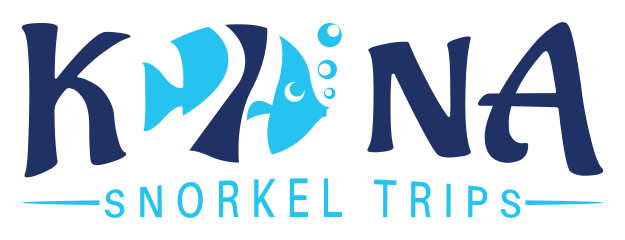Manta Ray Snorkel Kona: Unforgettable Ocean Adventure
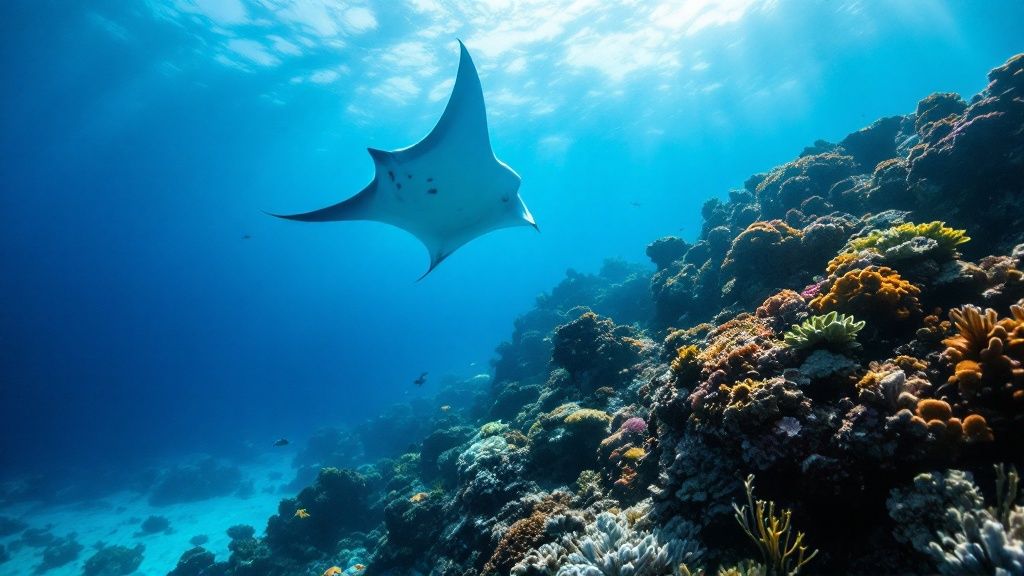
The Unforgettable Magic of Manta Ray Snorkel Kona
There's a significant difference between standard tourist activities and genuinely moving experiences. Manta ray snorkeling in Kona, Hawaii, undoubtedly falls into the second category. It's more than just another bucket list item; it's an encounter that changes perspectives and cultivates a deep respect for nature. This remarkable experience has rightfully claimed its spot as Hawaii's signature wildlife adventure.
Why Kona's Manta Rays Are So Special
The magic of this experience stems from the unique combination of factors that make Kona a sanctuary for manta rays. The underwater landscape, featuring volcanic slopes and deep canyons, provides an ideal habitat for these gentle giants. Furthermore, the nutrient-rich currents off the Kona coast deliver a constant supply of plankton, the manta rays' main food source.
This consistent food source attracts many mantas, making encounters incredibly common. In fact, manta ray snorkeling in Kona draws approximately 80,000 participants annually. It's recognized for its high sighting rates, with encounters happening about 80 to 90% of the time, regardless of the season. The cultural significance of manta rays in Hawaiian tradition adds another layer of depth to this remarkable experience. Learn more about Manta Ray Snorkel Kona experiences here.
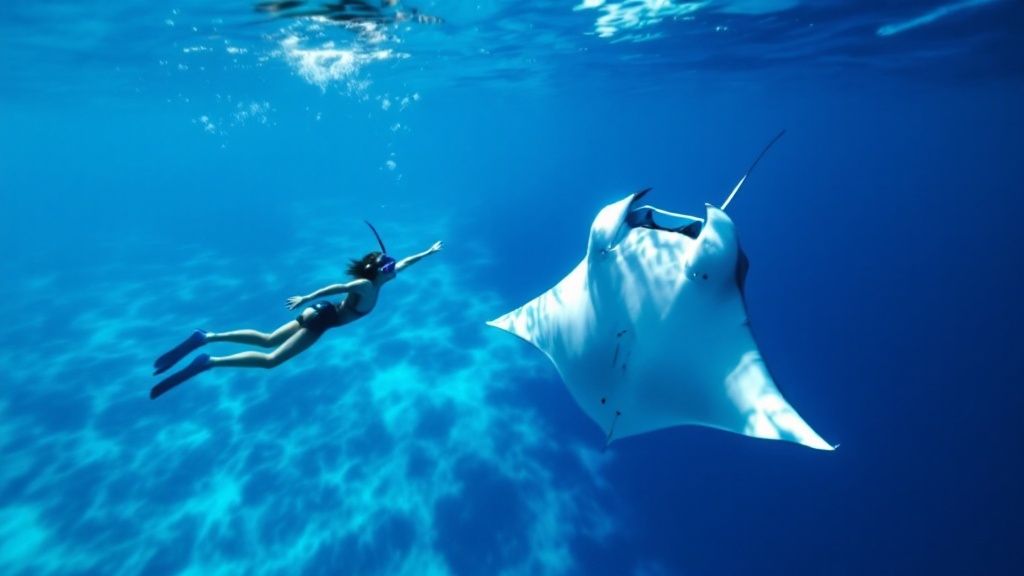
A Truly Moving Encounter
What truly distinguishes a manta ray snorkel is the sheer size and grace of these animals. Picture yourself floating on the surface as enormous, winged creatures, some with wingspans over 10 feet, perform a captivating underwater ballet beneath you. This is more than just watching wildlife; it's interacting with them in a way few other experiences offer.
The gentle nature of manta rays allows for remarkably close interactions, fostering a feeling of connection that remains long after leaving the water. This experience often inspires strong emotional reactions, from peaceful wonder to joyful excitement.
From Ordinary Snorkeling to Extraordinary Connection
The difference between a typical snorkeling trip and a manta ray encounter is like the difference between viewing a painting and becoming part of it. The immersive aspect of these interactions makes a lasting impact. This is not mere sightseeing; it's a chance to experience the pure beauty and power of nature firsthand.
Many participants describe a sense of awe and a renewed respect for the delicate balance of the ocean ecosystem. It’s an experience that resonates, changing how you perceive the underwater world and your role in it. This elevates manta ray snorkeling in Kona from a simple vacation activity to a truly memorable experience.
Prime Spots for Manta Ray Encounters in Kona
Not all manta ray viewing locations are created equal. Some Kona spots offer truly exceptional encounters. We'll explore the famous "Manta Village" and "Manta Heaven" with insights from experienced guides.
Unveiling the Magic of Manta Village and Manta Heaven
These locations' magic lies in a unique combination of factors. The underwater topography at both "Manta Village" and "Manta Heaven" plays a crucial role. Gentle slopes and shallow depths create ideal feeding grounds. The volcanic rock formations offer shelter and cleaning stations. This, coupled with plankton-rich currents, attracts manta rays in predictable patterns. Decades of observation have allowed guides to pinpoint the prime interaction zones.
"Manta Village," off the coast of Keauhou, earned its name from the consistent presence of manta rays. The shallow depth and sandy bottom create the perfect setting for the nightly plankton feeding frenzy. This offers incredible viewing for snorkelers. "Manta Heaven," closer to the airport, boasts exceptional visibility and often hosts larger groups of manta rays.
To help you choose the best spot for your manta ray adventure, we've compiled a comparison of the top viewing locations in Kona:
To help you choose the best spot for your manta ray adventure, we've compiled a comparison of the top viewing locations in Kona:
Top Manta Ray Viewing Locations in Kona
A comparison of the most popular manta ray snorkeling sites in Kona, with information about access, best viewing times, and special features.
| Location | Nickname | Best Time | Average Depth | Special Features | Success Rate |
|---|---|---|---|---|---|
| Keauhou Bay | Manta Village | Night | 10-20ft | Sandy bottom, gentle slope | High |
| North of Kona Airport (specific site varies) | Manta Heaven | Night | 15-30ft | Excellent visibility, volcanic rock formations | Very High |
| Makako Bay | Garden Eel Cove (Manta viewing less frequent) | Day/Night | 20-40ft | Diverse reef life, occasional manta sightings | Moderate |
| South of Kona Airport | (Various sites, often undisclosed by operators) | Night | Varies | Often chosen for smaller crowds | High |
This table highlights the key features of each location, including the typical depth and the likelihood of a successful manta ray sighting. While "Manta Village" and "Manta Heaven" are renowned for their consistent manta ray presence, exploring other sites with experienced guides can offer a more intimate experience.
Hidden Gems: Exploring Lesser-Known Viewing Spots
Beyond the famous locations, lesser-known spots offer intimate manta ray snorkel Kona experiences away from the crowds. These hidden gems often provide a more personalized encounter. You might be interested in exploring more Kona snorkel spots. These less-trafficked locations allow for a closer connection with the mantas and the marine environment. Accessing these spots may require specialized knowledge of local conditions and boat navigation. Exploring with experienced local guides is often best for a rewarding and safe experience.
Understanding Manta Ray Behavior and Sightings
Statistical data offers valuable insights into manta ray behavior. From 2009 to 2014, Manta Ray Advocates Hawaii meticulously documented sightings at key locations. This data reveals a consistent year-round presence, with some individuals appearing more frequently. Find more detailed statistics here. This helps researchers track individuals, understand their travel patterns, and contribute to conservation. This understanding contributes significantly to the success rates of manta ray snorkel Kona tours. The insights enable operators to predict manta ray activity, ensuring visitors have a high probability of an unforgettable encounter.
Inside the Magic: How Manta Ray Night Snorkel Works
Ever wondered how these incredible manta ray encounters happen? This section unveils the science and planning behind a successful manta ray snorkel Kona adventure. We’ll journey from the pre-snorkel briefing on the shore to the actual underwater marvel, revealing how specialized lighting creates a feeding environment that attracts these gentle giants.
From Briefing to Boat: Setting the Stage
Your manta ray adventure begins with a comprehensive briefing on shore. Experienced guides explain the process, emphasizing safety procedures and responsible interaction with the mantas. This is an excellent opportunity to ask questions and address any concerns about night snorkeling. From there, you'll embark on a short boat ride to the designated viewing area. Popular locations include “Manta Village” or “Manta Heaven,” prime locations known for these magical encounters.
The Science of Attraction: Lights, Plankton, and Mantas
The key to attracting manta rays lies in understanding their feeding habits. These graceful creatures are filter feeders, consuming massive amounts of plankton. Tour operators in Kona use specialized lights to enhance this natural feeding behavior. These lights attract plankton, which in turn draws in the manta rays, creating an illuminated underwater ballet. Snorkelers often observe manta rays performing acrobatic maneuvers as they feed, making these close encounters unforgettable. The consistent presence of the mantas allows tour operators to identify and track specific individuals, with as many as 250 documented in their databases. This ensures high sighting rates and supports conservation efforts. Discover more insights about manta ray research and conservation. You might be interested in: More information about our company and sitemap.
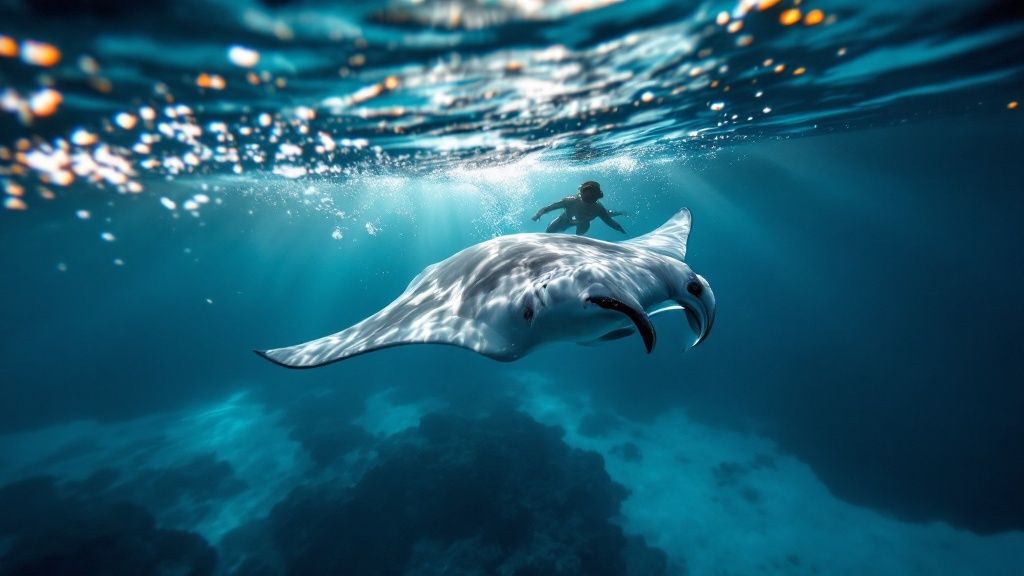
The Underwater Ballet: Observing Manta Ray Behavior
Once in the water, you'll hold onto a specially designed flotation device equipped with lights. This keeps you stationary and provides the best viewing angle. As the manta rays feed, you’ll witness their mesmerizing movements. They gracefully glide through the water, performing barrel rolls and backflips as they feast on the illuminated plankton. This is a chance to not only see these magnificent creatures, but also to understand their feeding patterns and interpret their elegant movements.
Addressing Night Snorkeling Anxieties
For first-timers, night snorkeling can seem intimidating. However, with the guidance of experienced professionals, it becomes a safe and enriching experience. The lights provide visibility, and the flotation devices offer stability. Guides are always present to ensure everyone feels comfortable and secure. These experienced professionals have helped countless visitors overcome their initial hesitations, enabling them to experience the magic of these life-changing encounters.
Selecting Your Perfect Manta Ray Snorkel Kona Experience
With so many manta ray snorkel tours available in Kona, choosing the right one can be daunting. This guide will help you navigate the options and find the perfect tour for your needs. We'll delve into the key differences, from small, intimate groups to larger tour boats, drawing on insights from Kona locals and tour operators.
Key Questions to Ask Before You Book
Planning your manta ray snorkel Kona adventure? Asking a few key questions beforehand can make all the difference. Inquire about the crew's experience, specifically their knowledge of manta rays and the local waters. Understanding the tour operator's safety procedures, such as life vest availability and emergency protocols, is also vital. Finally, ask about their conservation efforts to ensure your tour promotes responsible interactions with these incredible animals.
Factors That Influence Your Experience
Several factors can significantly impact your manta ray snorkel Kona trip. Group size can vary considerably, from intimate six-person boats to larger vessels. Smaller groups often provide a more personalized experience and increased interaction with the guides. Boat design also plays a role, with some boats offering easier water access for those with mobility concerns. The guide-to-guest ratio is another crucial element, influencing the level of individual attention you'll receive.
Balancing Cost and Experience: Making Smart Choices
Manta ray snorkel Kona tours come at various price points. Understanding the balance between cost and experience is crucial. Budget-friendly options may involve larger groups and less personalized service. Higher-priced tours often feature smaller groups, more experienced guides, and extras like snacks and drinks. Your ideal tour depends on your individual priorities and budget.
Special Considerations for Your Kona Manta Ray Adventure
When choosing a tour, consider your unique needs. Families with children should seek operators experienced with young snorkelers. Photography enthusiasts might want to inquire about lighting equipment and underwater camera recommendations. For those with accessibility needs or concerns about the water, it's crucial to communicate these in advance to ensure a comfortable and enjoyable experience.
To help you compare different tours, we've compiled a handy chart:
To help you compare different tours, we've compiled a handy chart:
Manta Ray Tour Comparison Chart
Detailed comparison of different types of manta ray snorkel tours in Kona, including price ranges, group sizes, and included amenities
| Tour Type | Average Cost | Group Size | Duration | Amenities | Best For |
|---|---|---|---|---|---|
| Small Group (6-12 people) | $150-$200 | 6-12 | 1.5-2 hours | Wetsuits, snorkel gear, sometimes snacks and drinks | Personalized experience, photography, families with young children |
| Standard Tour (12-25 people) | $120-$180 | 12-25 | 1.5-2 hours | Wetsuits, snorkel gear | Budget-conscious travelers, larger groups |
| Private Charter | $500-$1000+ | Customizable | Customizable | Customizable, often includes premium food and drinks | Families, special occasions, ultimate privacy and flexibility |
This chart provides a quick overview to help you find the manta ray snorkel Kona experience that best suits your preferences and budget. Remember to choose a reputable operator committed to sustainable and responsible tourism.
Beyond Tourism: The Economic & Conservation Impact
Manta ray encounters in Kona aren't just breathtaking; they're vital for the local economy and manta ray conservation. This connection between tourism, science, and preservation adds another layer of significance to these special encounters. Your manta ray snorkel Kona adventure directly contributes to both, making it more than just a vacation activity.
Supporting Kona's Economy Through Sustainable Tourism
Manta ray snorkeling contributes significantly to Kona's economy. This specialized tourism sector supports local businesses like tour operators, boat crews, equipment suppliers, and related services. Local restaurants and hotels also see increased business from the influx of visitors.
This ripple effect demonstrates the broad economic impact of sustainable tourism centered around these gentle giants. The economic impact is significant, although specific financial data isn't widely publicized. The activity generates substantial revenue, given its popularity.
With thousands participating annually, this industry supports a range of related businesses, from tour operators to equipment suppliers. The international recognition of Kona as a premier manta ray viewing site attracts visitors who contribute to other sectors, such as accommodations and dining. The consistent demand highlights the importance of responsible tourism practices for long-term sustainability. Explore this topic further here.
Conservation Through Research: Understanding Manta Rays
Tourism surrounding manta ray snorkeling also fuels vital research and conservation. The consistent presence of manta rays in Kona provides unique research opportunities, leading to citizen science programs involving tourists in data collection.
Many operators encourage visitors to photograph manta rays, contributing to identification and tracking. This data helps researchers monitor populations, understand migration patterns, and gain insights into manta ray behavior. You might be interested in: Our blog post archive.
Responsible Operations: Minimizing Impact, Maximizing Education
Responsible tour operators play a vital role in conservation and education. They implement practices to minimize environmental impact and educate visitors about manta rays and preservation.
These operators often collaborate with research organizations, sharing data and promoting best practices for sustainable manta ray tourism.
Protecting Manta Rays for Future Generations
By choosing a responsible manta ray snorkel Kona tour, you support the long-term protection of these magnificent animals. The economic incentives from sustainable tourism drive conservation efforts.
This ensures future generations can experience the wonder of encountering manta rays in their natural habitat.
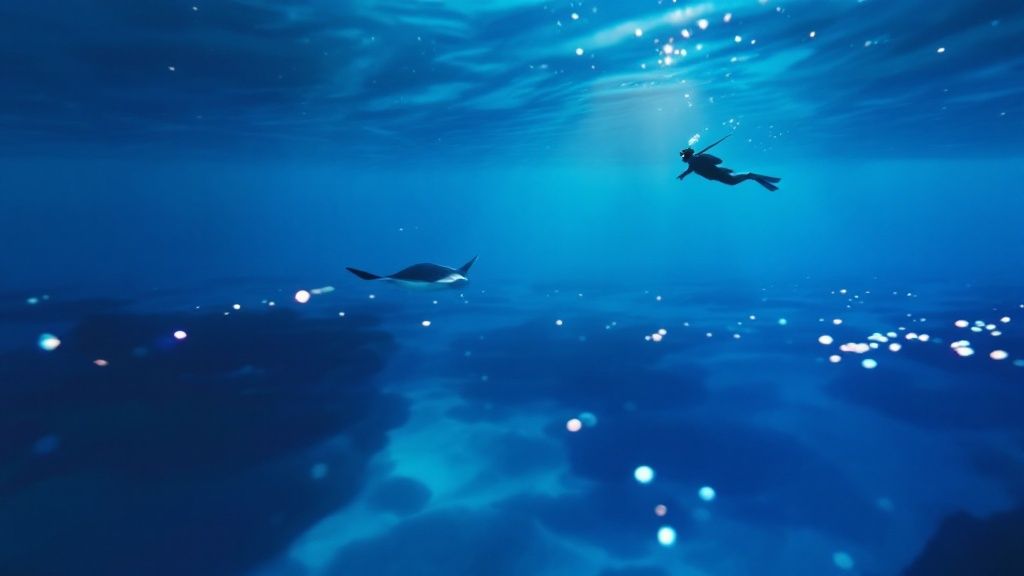
Maximizing Your Manta Ray Adventure: Insider Preparation
Want to elevate your manta ray snorkel Kona experience from simply memorable to truly unforgettable? This guide dives deeper than the basics, offering valuable insights gathered from seasoned guides, photographers, and manta ray enthusiasts.
Breathing Techniques for a Better Experience
Mastering a few breathing techniques can significantly enhance your comfort and enjoyment in the water. Slow, deep breaths are key for relaxation and maintaining buoyancy control. Practice inhaling deeply through your mouth and exhaling slowly through your nose. This technique helps prevent hyperventilation and conserves energy, allowing you to fully appreciate the manta rays without feeling short of breath.
Controlled breathing also helps you stay calm and minimizes splashing, which is important for not disturbing the mantas.
Strategic Positioning for Intimate Encounters
Smart positioning can greatly improve your chances of close manta ray interactions. Position yourself upstream of the light source. Mantas tend to feed into the current, so this placement allows them to swim directly toward you.
Avoid sudden movements or excessive splashing, as these can frighten the mantas and interrupt their feeding. Maintain a relaxed posture, using the provided flotation device for stability. Let the mantas approach you at their own pace. This patience often leads to incredibly close encounters.
Decoding Manta Ray Behavior
Understanding manta ray behavior enriches your appreciation of these magnificent creatures. Mantas are highly intelligent, and their movements often carry meaning. Barrel rolls and backflips usually signal active feeding, while slow, graceful glides suggest a more relaxed state.
Observe their interactions with each other. These behaviors can be playful or communicative. By noticing their subtle cues, you'll gain a deeper understanding of their captivating world.
Addressing Common Concerns
First-time manta ray snorkelers often have questions. Seasickness is a common worry, but taking motion sickness medication beforehand can help. Water temperature can fluctuate, so a wetsuit might be a good idea for added warmth.
Photography can be tricky in low light; GoPro cameras with underwater housings and red filters are often recommended. Always discuss any concerns with your tour operator. They're dedicated to ensuring you have the best possible experience.
Preparation for Different Needs
Certain preparations can further improve your experience depending on individual circumstances. Families with children should discuss the activity beforehand, emphasizing responsible behavior around the mantas. Experienced guides frequently provide specialized support for younger snorkelers, making it a safe and educational adventure.
If you have limited water confidence, select a tour operator known for small groups and attentive guides who can offer personalized assistance. Communicate your needs in advance. Reputable operators are happy to accommodate various experience levels and physical abilities.
Book your unforgettable manta ray snorkel Kona adventure with Kona Snorkel Trips today! Witness the magic of these gentle giants with Hawaii's highest-rated snorkel company.
